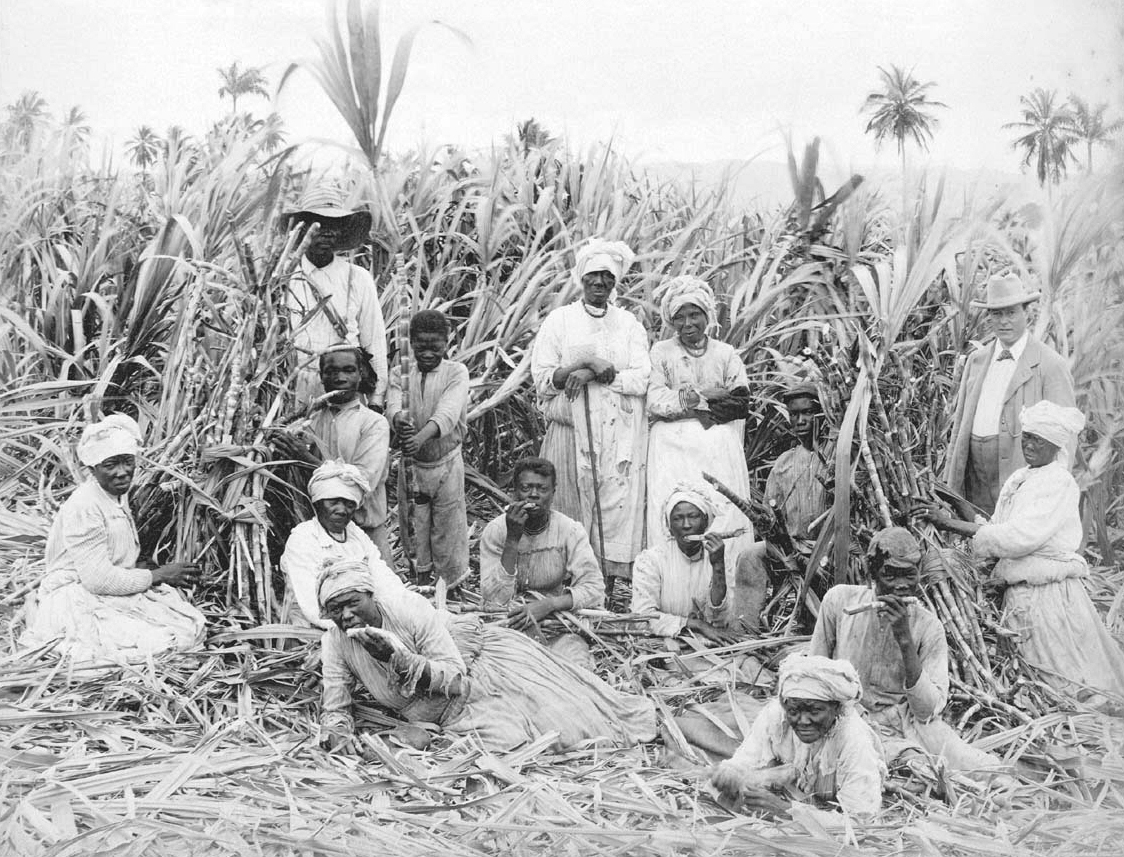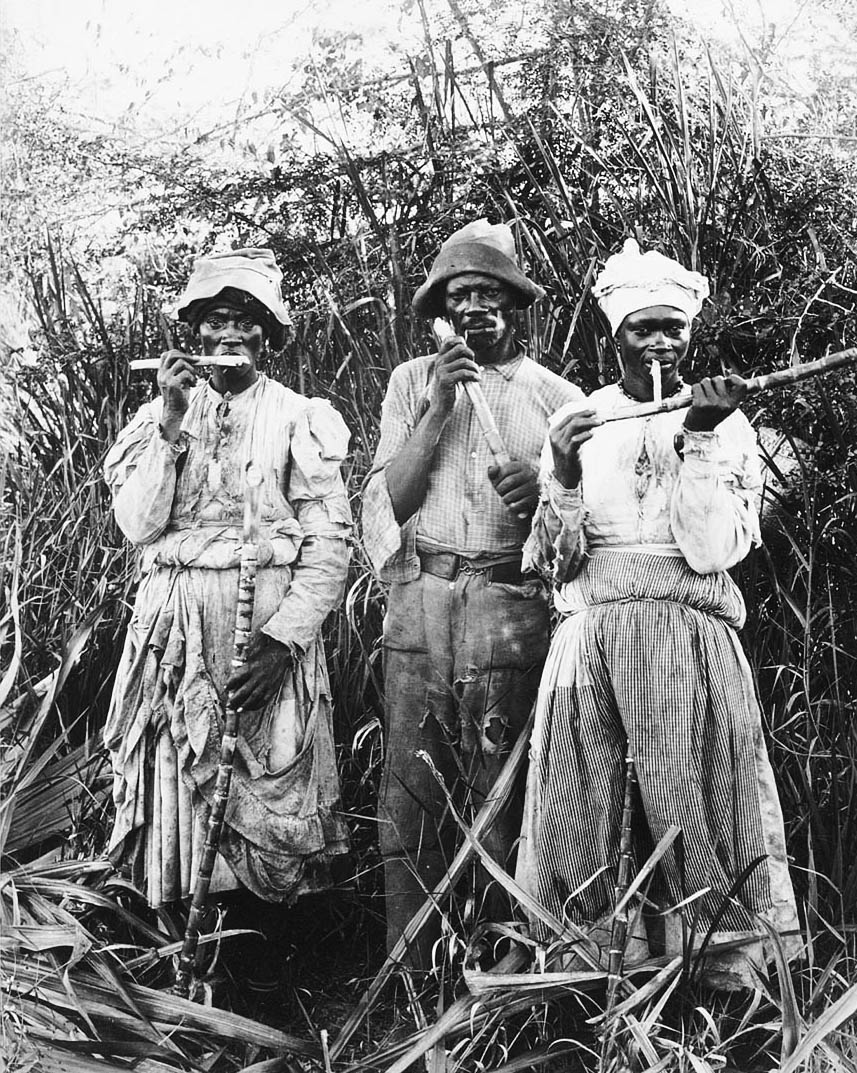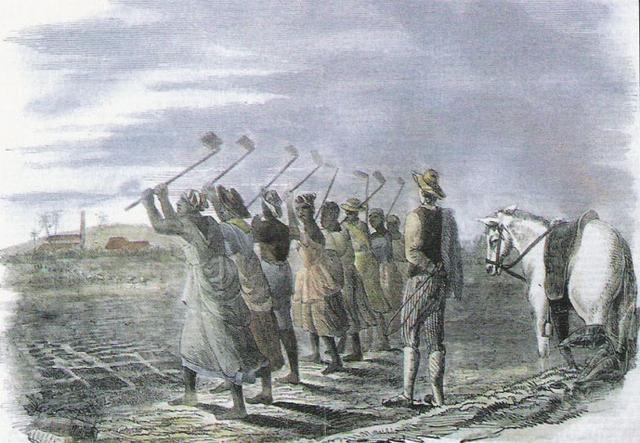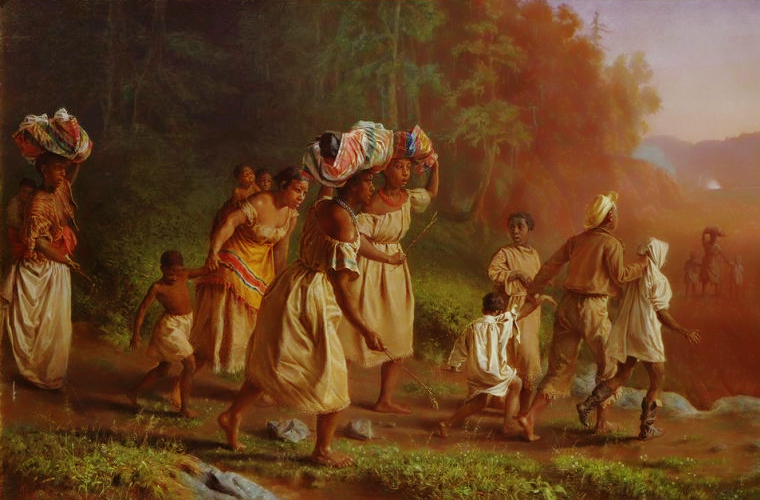Colonial-era fictional and non-fictional descriptions of slave motherhood offer conflicting accounts of the attitudes of slave mothers toward their children. While abolitionists tended to portray slave mothers as wholly selfless, doting, and maternal, pro-slavery writers described slave mothers as negligent and cruel. The debate over the nature of slave motherhood was especially relevant to the Caribbean, where brutal working conditions, disease, and malnutrition impeded slave reproduction. Plantation owners blamed slave women for their failure to reproduce, accusing them of practicing birth control and procuring abortions. In some cases, planters accused slave women of committing infanticide.
It is difficult to ascertain just how often the latter occurred. There is certainly evidence to suggest that Caribbean planters’ allegations of slave women killing their infants were exaggerated. On the other hand, “the infant mortality rate from natural causes was undoubtedly high in the Caribbean, but the unusually high death rate within the first week, not satisfactorily explained as caused by tetanus, may signify that women used preparations which effected apparently natural death.” One of the more famous stories of slave infanticide in the Caribbean is that of Sabina Park, a Jamaican slave who was brought to trial for killing her young child. Park claimed that she “had worked enough for buckra (master) already and that she would not be plagued to raise the child… to work for white people.”
The obvious response to slave infanticide is to conceptualize it as an act of desperation, a sad act, or an act of altruism, in the sense that it was intended to save enslaved children from a life of hard labor, degradation, and physical, sexual, and mental abuse.
But what if slave infanticide, in all its horror, was an expression of resistance? To conceptualize it this way places agency back in the hands of the slave women who killed their children because it assumes that their decision was actively, discursively antagonistic, and insurrectionary.
Reactions to slave infanticide varied according to one’s beliefs about the nature of slaves and the justice of slaveholding. According to Christopher Peterson, “for racist ideologies, slave infanticide is further proof of an animality inherent in black motherhood: a propensity to violence from which white motherhood is exempt. For abolitionists, [it] emerges both as proof of slavery’s evils and of a mother’s love for her children.” Indeed, in keeping with the viewpoint Peterson attributes to abolitionists, the obvious response to slave infanticide is to conceptualize it as an act of desperation, a sad act (which it certainly was), or an act of altruism—altruism in the sense that it was intended to save enslaved children from a life of hard labor, degradation, and physical, sexual, and mental abuse. But what if slave infanticide, in all its horror, was an expression of resistance? To conceptualize it this way places agency back in the hands of the slave women who killed their children because it assumes that their decision was actively, discursively antagonistic, and insurrectionary.
 An image depicting cane cutters in Jamaica after formal slavery was ended, mid-19th century. More than half of the slaves in the region were female.
An image depicting cane cutters in Jamaica after formal slavery was ended, mid-19th century. More than half of the slaves in the region were female.
The extremely grave nature of this subject matter merits an unusually high degree of respect and sensitivity in one’s approach to it. History is not a neutral discipline. Considering infanticide as a form of resistance is important in telling the story of Caribbean slave women as full people, as rational actors who made calculated decisions with rebellion in mind. Drawing on colonial-era accounts of slave motherhood, resistance theory, and recent work on the sociology of slavery, the central aim of this paper is to explore the equation of infanticide with resistance, with a geographical focus on the colonies of Jamaica, Barbados, and Saint-Domingue. All of the historical sources cited are from the mid-eighteenth century to 1834, when Britain abolished slavery in its colonies. Sources pertaining to Saint-Domingue are from prior to the slave rebellion of 1791 that culminated in the abolition of slavery in the colony.
Considering infanticide as a form of resistance is important in telling the story of Caribbean slave women as full people, as rational actors who made calculated decisions with rebellion in mind.
Extant accounts of Caribbean slave life are rife with racist assumptions about the supposed negligence and selfishness of black mothers. For example, many plantation owners accused slave women of procuring abortions with the intention of continuing to have promiscuous sex, unhindered by pregnancy. White observers such as plantation owners, overseers, and doctors believed that slave women’s alleged promiscuity made them especially prone to venereal disease. They often blamed slave miscarriages on the medicines slave women took (or supposedly took) to treat venereal disease. The logical implication of this belief was that if slave women were not so sexually indiscriminate, they would not need to take miscarriage-inducing medicines. Indeed, plantation owners found it more convenient to blame slave women for their failure to produce healthy offspring than to accept responsibility for the deplorable conditions that undoubtedly contributed to complications in pregnancy and childbirth. Physicians in Saint-Domingue accused slave mothers of causing mal de mâchoir (or ‘soreness of the jaw,’ cases of which have been retrospectively diagnosed as tetanus and neonatal tetany) among infants. This, of course, functioned to bolster the claim that enslaved women were neglectful, evil, unfit mothers. According to the French author of a 1790 pro-slavery pamphlet, they “destroy their own fruit, or they practice infanticide in order to live without moderation.”
These derogatory cultural images of enslaved mothers are relevant to the analysis of slave infanticide because they colored white people’s perception of slaves’ reproductive habits. It was a difficult task, determining if a documented infanticide case was valid, and not a natural death caused by poor living conditions. As a result, there is no clear consensus among historians on the issue. In 1796, a slave named Mary Thomas of the Newton Estate in Barbados was accused of killing her newborn infant. Historian Hilary McD. Beckles describes the event by restating Wood’s claim that Mary Thomas killed her infant out of anger at her white lover, the plantation bookkeeper. Beckles does not question Woods in this paraphrased account. Conversely, in her summary of the Mary Thomas case, historian Tara A. Inniss casts doubt on Wood’s accusation of infanticide, adding, “Enslaved midwives were easy targets for blame should the child succumb to illness or sudden death in the first days of life.” Inniss and Beckles’ differing interpretations of Wood’s account demonstrate the challenge of discerning fact from fiction in records of infanticide. It is almost impossible to tell if Mary Thomas was, in fact, guilty of killing her infant.

Even those who believe that slave infanticide was common to admit that this supposition is based on some speculation. In the words of Barbara Bush, who has written extensively on gender and slavery in the Caribbean, studying Caribbean slave infanticide requires “informed speculation and creative approaches in history.” A perfect example of such a speculative, creative approach lies in James A. Delle’s analysis of birth and death records of the Radnor Plantation in Jamaica. Records from the years of 1822-1825 list eight infant deaths for which the cause of death is unnoted. Delle speculates that some of these were infanticides. Bush is one of the more vocal proponents of the argument that slave women frequently practiced infanticide. In an article titled “Hard Labour: Women, Childbirth, and Resistance in British Caribbean Slave Societies,” she notes that Caribbean populations grew significantly after emancipation, even though the standard of living hardly improved in most places. To her, this indicates that the “nature of slavery and the responses of slave women to their bondage must also be considered.” Bush notes that slave infanticide occurred in the antebellum United States, where slaves lived under generally better conditions than in the Caribbean. Thus, it was probably also practiced in the Caribbean. This statement is supported by the fact that, in general, Caribbean slave populations were more successful than those in the United States in preserving parts of West African cultural traditions. In many traditional West African cultures, newborn babies are not considered fully human until eight days after birth. According to Bush, the possibility that slave women committed infanticide through “letting” their young infants die (as opposed to violently killing them) is likely.
Numerous books and articles on slavery in Saint-Domingue state that infanticide contributed to the colony’s low fertility rate but do not provide any concrete examples of recorded infanticides. Londa L. Schiebinger’s Plants and Empire: Colonial Bioprospecting in the Atlantic World is a notable exception. Schiebinger cites a Saint-Domingue physician’s account of a woman who killed her two children to “steal them away from slavery and the discovery of the bodies of thirty-one infants at a Saint-Domingue plantation, some of which had most likely been killed. On the same plantation where the bodies were discovered, an infant said to have died of tetanus was found to have a ball of “vegetable matter” stuffed in its throat. On another Saint-Domingue plantation, a midwife admitted to killing seventy newborn babies. “See if I deserve death!” she reportedly said. “It is a shameful custom to raise children into slavery.” Reports of Jamaican slave infanticide include those found in the birth and death records of the Mesopotamia Plantation and the aforementioned Sabrina Park case.
In sum, the lack of large-scale data on the prevalence of slave infanticide in the British and French Caribbean makes it a difficult topic of study. Planters’ racist misconceptions about black female sexuality and motherhood taint the extant records to which historians have access, adding another layer of difficulty. Still, it is likely that just as in the United States, slave infanticide was not unknown in the Caribbean. Perhaps the significance of slave infanticide lies not in its frequency, but in the social meanings with which it was embedded. With that in mind, the next step in telling the story of infanticide in Barbados, Jamaica, and Saint-Domingue is discerning the meanings that slave women prescribed to the act of killing their infants.
Most of the scholarly literature on slave infanticide focuses on slavery in the antebellum United States.25 In this literature, recorded cases of infanticide are frequently dismissed as anomalies and followed by lengthy declarations of slave women’s maternal aptitude. The effect of this is to imply that infanticide excludes the possibility of parental love, and vice-versa. The truth is somewhat more complex. As Darlene Clark Hine and Kathleen Thompson explain in A Shining Thread of Hope: The History of Black Women in America, slaves’ statements on infanticide indicate that the killing of one’s children was often conceived of as an altruistic act and that enslaved women who killed their children often did so out of love
Just as maternal tenderness and infanticide were not mutually exclusive, neither were altruism and subversion. In other words, it is extremely likely that mothers who committed infanticide did so with the duel intentions of saving their children from slavery and resisting slaveholding hegemony. To enter this discussion requires a preliminary understanding of resistance theory. Historians and anthropologists of slavery (as well as scholars in other fields) have in recent decades produced an abundance of scholarship on what is often called ‘everyday resistance.’ Theorizers of everyday resistance point out that resistance need not occur within the context of organized political movements or involve violence. Everyday forms of slave resistance, unlike armed rebellion, were generally non-violent and included acts such as feigning illness to get off work. Scholarly treatment of every day (sometimes termed ‘passive’ or ‘peaceful’) slave resistance dates at least as far back as 1942, with the publication of Raymond and Alice Bauer’s article “Day to Day Resistance to Slavery” in the Journal of Negro History. The Bauers cite self-mutilation, the destruction of plantation property, and the deliberate slowing down of work as examples of slave resistance in the antebellum American South. In a discussion of the French West Indies (including Saint-Domingue), Clarence Mumford explores the role of African-based dance rituals in slave resistance and posits that slaves’ participating in such rituals as a form of ‘passive resistance. The concept of everyday resistance compels us to consider the subversive nature of acts that may not initially appear particularly subversive.
 An engraving depicting slave women in Saint-Dominque.
An engraving depicting slave women in Saint-Dominque.
Especially frequent among Caribbean slaves newly-arrived from Africa, slave suicide was an act whose subversive nature is easily overlooked. The act of suicide is often framed in popular discourse as an act of resignation, of giving up, but some scholars of slavery argue that slave suicide was a form of resistance.33 Influenced by the West African belief that in death they would return to their homeland, slaves who killed themselves took pleasure in ending their lives. And in killing themselves, they deprived their owners of human chattel. Though suicide cannot technically be classified as non-violent or every day, scholars who argue that it functioned as a resistance strategy again interrogate the notion that resistance must involve armed rebellion or political mobilization.
Infanticide was an expression of enslaved women’s claim to their own children. Slave women who committed infanticide resisted slaveholder hegemony by laying claim to their own children over the master’s claim.
Like suicide, slave infanticide was both tragic and imbued with subversive meanings. Scholars place infanticide under the heading ‘gynecological resistance,’ which refers to slave women’s attempts to resist reproduction through, for example, contraception and abortion. The most obvious component of infanticide as resistance is that by killing their infants, enslaved women denied slave owners the bodies that slavery required to function. Indeed, it is very likely that Caribbean planters, like those in the United States, saw slave infanticide as a form of robbery—the robbery of their corporal capital. Records from the United States show that women who killed or threatened to kill their children recognized this and thus understood infanticide as a means of subversion.
It is worth noting that the rape of female slaves by white masters and overseers is well-documented in both the British and French West Indies. There also exist records of slaves being forced to mate (or, in planters’ words, ‘breed’) to produce offspring. Infanticide of the children resulting from these nonconsensual sex acts bears special symbolic significance as an act of striking out against white male sexual predation.
On an even more symbolic level, infanticide was an expression of enslaved women’s claim to their own children. As an institution, slavery was characterized by its displacement of kinship ties. As Christopher Peterson explains in an article on Toni Morrison’s Beloved, “Alienated from all rights or claims of birth, slaves are severed from all genealogical ties to their living blood relatives, and to their ancestors and descendants.” Under slavery, one could not make legal decisions regarding one’s children. Slavery undermined a parent’s ability to determine how her children should live and where they should live. Slaveholders’ legal ownership of enslaved bodies trumped parents’ natural rights of guardianship. Slave women who committed infanticide thus resisted slaveholder hegemony by laying claim to their own children over the master’s claim.
All of this is not to suggest every act of infanticide in Barbados, Jamaica, and Saint-Domingue was an act of resistance or that all women who committed infanticide had a subversive aim. To imply that this was the case would not only be overly simplistic but might also reinforce negative stereotypes about the malevolent, evil slave mother. On the contrary, it is not unlikely that many slave women who killed their children did so for supremely altruistic reasons. It is also quite possible that individual cases of infanticide resulted from a combination of both insurrectionary and altruistic aims, not merely one or the other. Indeed, resistance and altruism are not mutually exclusive; slave women who killed their children might have done so with the dual intentions of resisting slaveholder authority and protecting their children.
It is highly unlikely that slave women who killed their children approached it uniformly— for some, it was probably a deeply sad affair, for others, an emotionally neutral one; for some, an act of resistance against slavery, for others, an act of altruism toward their offspring. For others still, it may have been a combination of all of these things. The point is that to only conceive of slave infanticide as an act of tragic motherly love, or to disregard its insurrectionary undertones, leaves one with an incomplete understanding of it.
To paraphrase Haitian historian Michel Trouillot, the story of Caribbean slave women—a story of which infanticide is a part— is filled with silences.43 Further research on slave infanticide in the Caribbean is needed. Attempting to understand why some enslaved women in Jamaica, Barbados, and Saint-Domingue committed infanticide helps fill some of these silences and tell a more complete story. It may seem presumptuous for contemporary writers to take on the role of a storyteller of a story that is not theirs. This is a valid criticism. At the very least, it underscores the necessity of not filling the holes left by historical silences with our own preconceptions; of coaxing silenced voices out of the records, not creating new ones.
To disregard the potential of slave infanticide as an act of rebellion is to disregard slave women’s agency as dissidents under a system that worked to silence, dehumanize, and disempower them. The Saint-Domingue midwife who killed so many infants, Sabina Park of Jamaica, the Saint-Domingue woman who wanted to “steal” her children from slavery: these women’s stories suggest a clear insurrectionary motivation behind their actions. Writers of history owe them, and women like them, recognition as agents of resistance.

